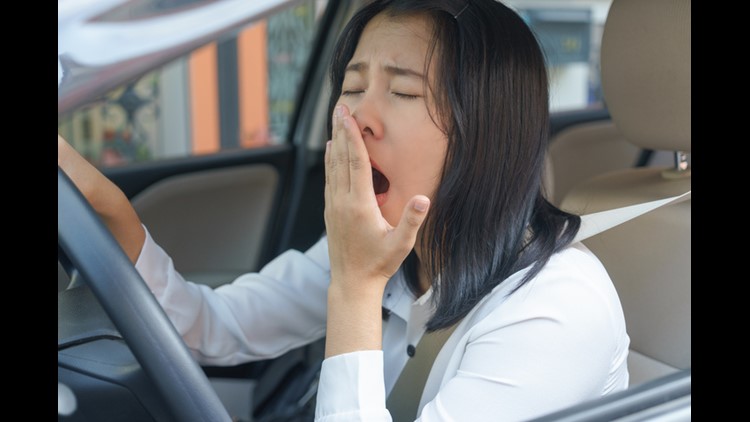WASHINGTON – Drowsy driving plays a role in nearly eight times more severe accidents than federal estimates suggest, according to study released Thursday by the car and travel group AAA.
By studying dashboard video from 700 accidents, the AAA Foundation for Traffic Safety found that 9.5% of all crashes involved drowsy drivers, based on the portion of time the drivers’ eyes were closed in the minutes before a crash. The portion grows to 10.8% in more severe crashes.
Federal estimates suggested drowsiness was a factor in only 1% or 2% of crashes.
“Drowsy driving is a bigger traffic safety issue than federal estimates show,” said David Yang, the foundation’s executive director. “Drivers who don’t get enough sleep are putting everyone on the road at risk.”
More about drowsy driving:
The risks of drowsy driving include driving across lanes or not remembering the last few miles driven, according to AAA. Strategies for longer trips include taking a break from driving every couple of hours, taking turns driving with an alert passenger or pulling into a rest stop for a 20-minute nap.
But AAA experts say tactics such as drinking coffee, singing or rolling down the window won’t keep a driver alert.
“Don’t be fooled, the only antidote for drowsiness is sleep,” said William Van Tassel, AAA’s manager of driver training. “Your body’s need for sleep will eventually override your brain’s attempts to stay awake.”
The problem is common. About 35% of U.S. drivers sleep less than the recommended seven hours per night, according to the Centers for Disease Control and Prevention.
Nearly all drivers (96%) in a survey told the AAA Foundation they view drowsy driving as a serious threat, but 29% admitted driving in the previous month when they had trouble keeping their eyes open.
“As many Americans struggle to balance their busy schedules, missing a few hours of sleep each day can often seem harmless,” said Jake Nelson, AAA’s director of traffic safety advocacy and research. “But missing just two to three hours of sleep can more than quadruple your risk for a crash, which is the equivalent of driving drunk.”
AAA called the study the most in-depth ever conducted on drowsy driving. The study recruited 3,593 drivers from six places across the country who allowed cameras to be placed in their cars for several months at a time from October 2010 to December 2013.
The study narrowed the 905 severe, moderate or minor crashes to 701 because the driver’s eyes weren’t visible for reasons such as glare or sunglasses.
Based on previous studies, researchers classified drivers as drowsy if their eyes were 80% closed or covering the pupil at least 12% of the time in the minutes before a crash.
The crashes included 589 when the driver’s eyes were visible for the final 3 minutes before a crash, and 112 for the final minute before a crash.
Nearly one-third (31%) of the crashes were severe enough to result in injury, rollover, airbag deployment or significant property damage. The rest generally weren’t severe enough to report to police.
The AAA study found 9.5% of all crashes and 10.8% of higher-severity crashes involved drowsiness.
The National Highway Traffic Safety Administration reported last year that driver drowsiness was involved in 1.4% of all police-reported crashes, 2% of crashes resulting in injuries and 2.4% that resulted in death from 2011 to 2015.
“By conducting an in-depth analysis using video of everyday drivers, we can now better assess if a driver was fatigued in the moments leading up to a crash,” Yang said.



